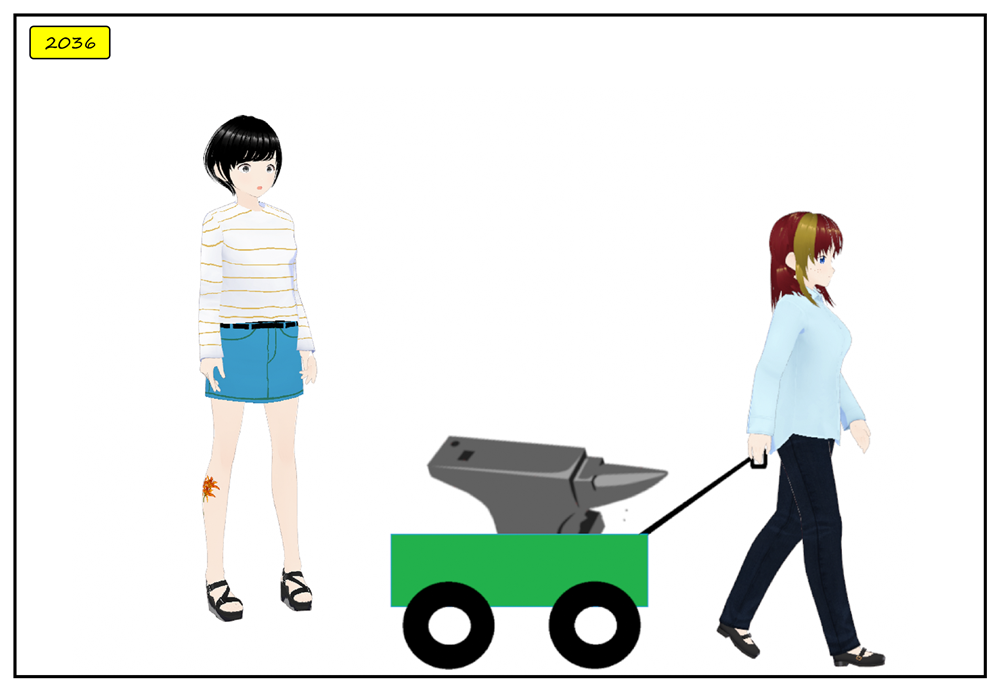Nobody's Property Illustrated Series #848
Previous... ...Next

Previous... ...Next
Anvils in Cartoons: A Classic Comedic Element with Surprising Depth
Anvils in cartoons have long been an iconic and instantly recognizable element of comedic storytelling. From the timeless antics of Looney Tunes characters to modern animated shows, anvils dropping from the sky onto unsuspecting characters have elicited laughter for generations. While seemingly a simple visual gag, the use of anvils in cartoons carries both historical significance and a deeper layer of symbolism.
The origins of anvils in cartoons can be traced back to vaudeville and silent films, where physical comedy reigned supreme. The concept of heavy objects falling onto characters, often accompanied by exaggerated sound effects, was an easy way to generate laughs without relying on dialogue. The anvil, due to its weight and shape, became the perfect object for this purpose. This classic gag quickly transitioned into the world of animation, captivating audiences with its absurdity and unpredictability.
Beyond the surface humor, anvils in cartoons hold a symbolic value. Anvils are associated with blacksmithing, a traditional craft where raw materials are forged and shaped into useful tools. In a cartoon context, the anvil embodies transformation and change, albeit in a humorous and exaggerated manner. The impact of an anvil can drastically alter a character's circumstances, much like life's unexpected events can reshape our own paths.
Furthermore, the gag often plays on the element of surprise. Characters going about their business suddenly find themselves at the mercy of gravity and a plummeting anvil. This surprise element aligns with the essence of comedy, as unexpected twists generate laughter by defying expectations.
Interestingly, it has also inspired discussions about physics and realism in animation. As creators strive to achieve increasingly sophisticated visual effects, the portrayal of anvils dropping from the sky may provoke debates among viewers about the laws of physics and their suspension in the animated world.
The use of anvils in cartoons is a time-honored comedic tradition that combines historical roots, symbolic significance, and a dash of absurdity. While appearing as a straightforward visual gag, anvils dropping on characters encapsulate surprise, transformation, and unexpected humor. Whether employed for nostalgic reasons or to introduce a new generation to the joys of classic slapstick, the humble anvil remains a cornerstone of animated comedy, reminding us that sometimes the simplest of gags can be the most enduring.
However, it is important to note that dropping anvils on people in real life is extremely dangerous and should never be attempted. Anvils are heavy objects with significant mass, capable of causing severe injuries or even fatalities upon impact. Their weight, combined with gravitational force, can lead to crushing injuries, broken bones, and internal damage. The impact could cause irreparable harm to a person's body, including death.
Moreover, the act of dropping an anvil on someone constitutes a reckless and potentially criminal act, resulting in legal consequences. The use of anvils in this manner shows a complete disregard for human safety and well-being. In real life, anvils are not objects to be used as comedic props; they pose serious risks to human life and should never be employed in such a dangerous and harmful manner.
Nobody's Property is published by Sansevieria Media. All Rights Reserved.
© Nobody's Property Illustrated Series, copyright 2018- | all rights reserved. This illustrated series is for entertainment purposes only. Please do not attempt any homicidal, vigilante, or other illegal acts.